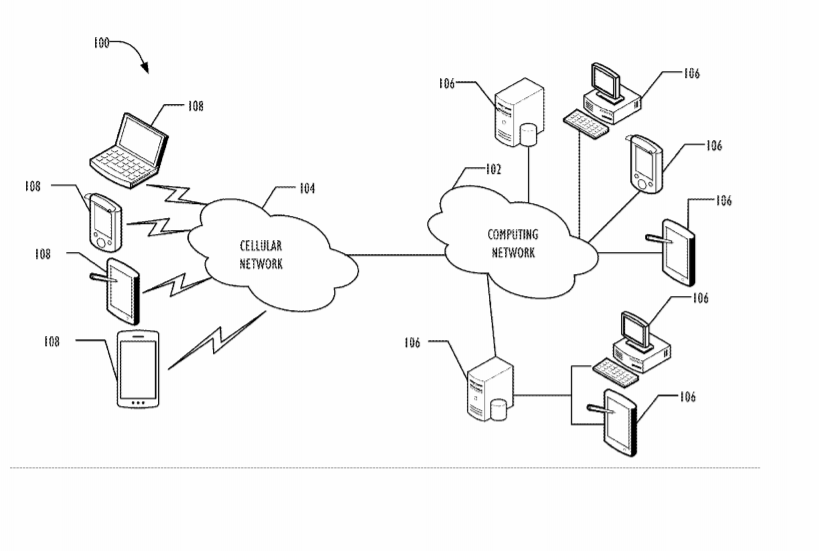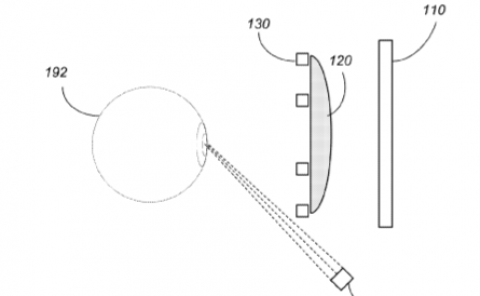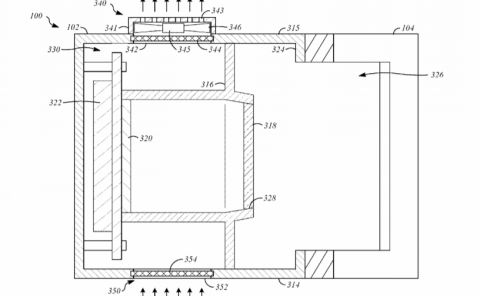Apple Patent | Visual Inertial Odometry Health Fitting
Patent: Visual Inertial Odometry Health Fitting
Publication Number: 20190164040
Publication Date: 20190530
Applicants: Apple

Abstract
Systems, methods, and computer readable media to track and estimate the accuracy of a visual inertial odometry (VIO) system. Various embodiments are able to receive one or more VIO feature measurements associated with a set of image frames from a VIO system and generate a plurality of feature models to estimate health values for the VIO system. The various embodiments determine a plurality of feature health values with the feature models based on the VIO feature measurements and compare the feature health values with ground truth health scores associated with the set of image frames to determine one or more errors. The feature model parameters are updated based on the comparison with the feature health values with ground truth health scores.
BACKGROUND
[0001] This disclosure relates generally to mapping and tracking of location information with a machine learning computing system. More particularly, but not by way of limitation, this disclosure relates to implementing machine learning operations that monitor the health of a visual inertial odometry (VIO) system, such as a Simultaneous Localization and Mapping (SLAM) system.
[0002] Computer vision methods often involve having a computing system extract and analyze digital images from a real environment to understand real world contexts and form decisions based on these contexts. SLAM technology, in particular, involves automatically determining the position and/or orientation of a device relative to a real environment and creating a scaled geometrical model of the real environment without requiring pre-knowledge of the environment. The creation of the scaled geometrical model of the real environment can also be referred to as reconstruction of the environment. The use of SLAM technology is pertinent to many applications, such as navigation of a robot system or a mobile system, 3D reconstruction, camera pose estimation and supporting Augmented Reality (AR) applications in an unknown real environment.
[0003] SLAM technology can utilize one or more cameras and one or more inertial measurement units (IMUs) to track and update a map for an unknown real environment. The cameras are able to capture images of the real environment and the IMUs are able to capture measurements relating to the SLAM system, such as force, acceleration, angular velocity, and/or magnetic field. SLAM technology relies on information obtained from the images and IMU data to achieve, in real-time, localization and mapping at a relatively high position accuracy. Given a set of time-constructive images and IMU data, a SLAM system is typically able to determine its position and orientation at varying points in time. Unfortunately, the accuracy of the position and orientation estimations may vary depending on a variety of factors, such as image content and types of motions the SLAM system experiences. As a result, being able to determine and notify users and/or other system components that the position and orientation accuracy estimation is accurate or has become inaccurate is valuable for computer vision-based technologies.
SUMMARY
[0004] In one embodiment, the disclosure provides a method to determine health values from one or more VIO feature measurements. The method receives one or more VIO feature measurements associated with a set of image frames from a VIO system. The VIO feature measurements are based on a VIO system’s processing of the image frames to determine position, orientation, or both types of information. The method is able to generate a plurality of feature models to estimate health values for the VIO system. Each feature model includes at least one tunable feature model parameter to determine a plurality of feature health values based for the VIO feature measurements. Afterwards, the method compares the feature health values with ground truth health scores associated with the set of image frames to determine errors between the feature health values and the ground truth health scores. Based on the errors, the method is able to update the feature model parameters for one or more of the feature models.
[0005] In another embodiment, the method determines an overall health score for a VIO system. A method in accordance with this approach includes determining a plurality of frame health scores based on one or more feature health values and a frame model, where the frame model includes at least one frame model parameter. The method determines an overall health score for the VIO system based on the frame health scores and a decaying weight model. The decaying weight model includes at least one weight model parameter that weighs the frame health scores. The method then compares the frame health scores and the overall health score with a set of ground truth health scores associated with the image frames that correspond to the feature health scores. After the comparison, the method updates the frame model parameter and the weight model parameter based on the comparison of the frame health scores and the overall health score with the set of ground truth health scores.
[0006] In yet another embodiment, the method estimates an overall health value for a VIO system. This approach involves receiving one or more VIO feature measurements associated with a set of image frames from a VIO system and determining a plurality of feature health values with the feature models based on the VIO feature measurements. The method then determines a plurality of frame health scores based on one or more feature health values and a frame model, where the frame model includes at least one frame model parameter. The method determines an overall health score for the VIO system based on the frame health scores and a decaying weight model that weighs the frame health scores. The frame models, the feature models, and the decaying weight model are part of a neural network classifier model.
[0007] In one embodiment, each of the above described methods, and variation thereof, may be implemented as a series of computer executable instructions. Such instructions may use any one or more convenient programming language. Such instructions may be collected into engines and/or programs and stored in any media that is readable and executable by a computer system or other programmable control device.



